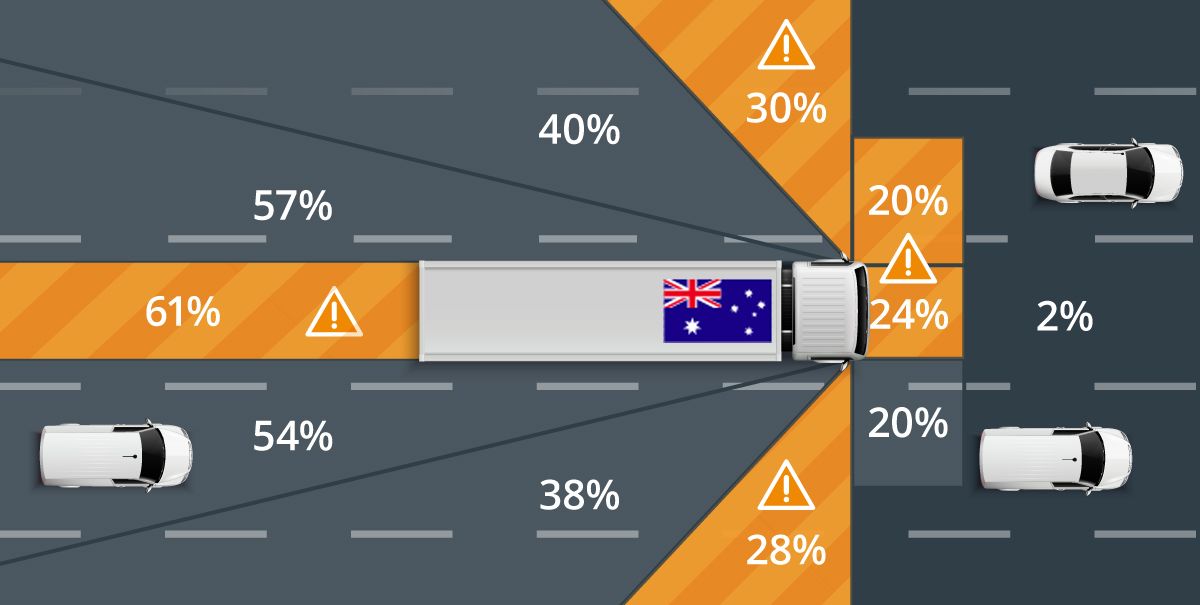Share the road with trucks
Get to know truck blind spots
For motorists
- Blind spot awareness: Get to know truck blind spots and position your vehicle to be seen. Trucks have blind spots immediately in front, directly behind, beside the driver door and a significant area on the passenger side.
- Allow extra space: Leave a safe gap, trucks need more room to stop.
- Keep left: Unless overtaking.
- Don’t crowd or tailgate: Trucks need space and can take up to 40% longer to stop than a car.
- Leave a safe gap between your vehicle and the truck and provide extra space where possible.
- If a truck is in your vicinity, avoid driving immediately behind it as you will not be visible to the driver.
- If you can’t see the truck’s side mirrors when behind it, the truck driver will not see you.
- If you are in an adjacent lane, sit well behind the trailer so the truck driver can use his rear-view mirrors to keep you in sight.
- Check your mirrors: Your mirrors are an extension of your eyes. Keep them clean and properly positioned to give you maximum visibility.
For truck drivers
- Regularly check your mirrors
- Leave space, in case you need to break suddenly
- Don’t over occupy the right lane, allow motorists to overtake safely
- Indicate well in advance to give motorists notice of your movements and time to move out of the way.
- Consider installation of blind spot sensors.
Driving safely around trucks
Transurban research reveals that drivers are taking unnecessary risks when driving around trucks, with many people unaware when they’re in a truck’s blind spot.
Due to their length and height, large trucks have blind spots immediately in front of them, directly behind, beside the driver door and a significant area on the passenger side. Alarmingly, only 4% of drivers from Melbourne, Sydney and Brisbane were able to correctly identify all truck blind spots, while 81% could identify at least one blind spot.
There is particularly low awareness of blind spots located in front of trucks, with only 20-24% of people understanding that truck drivers can’t see them when they’re travelling in these zones. Perhaps as a result of this, feelings of safety when driving around heavy vehicles are mixed, with 41% of drivers reporting feeling unsafe when driving around large trucks.
Percentage of people surveyed who could identify each truck blind spot

Low awareness of truck blind spots can lead to incidents such as sideswipes or rear-end crashes, which are some of the most common incidents Transurban responds to across our road network.
Road transport accounts for nearly a third of all freight in Australia, moving most of the commodities made and used around the country — things like food, fuel, household appliances and online shopping will generally reach their destinations by road.
With even more trucks expected on the road as the freight task grows, it’s a good idea to make sure you’re aware of truck blind spots and how to safely share the road with larger vehicles.
We work with the transport industry and research partners to deliver new and innovative technologies to improve road safety for all users, as well as help to promote simple changes all drivers can make to ensure a safer road network
Continued education about blind spots, along with reminders about the dangers of fatigue, distraction and speed, all play an essential part in making the roads safer for everybody.



